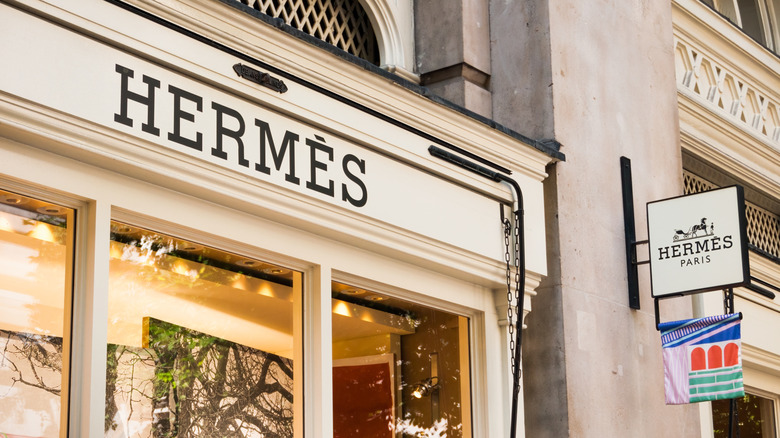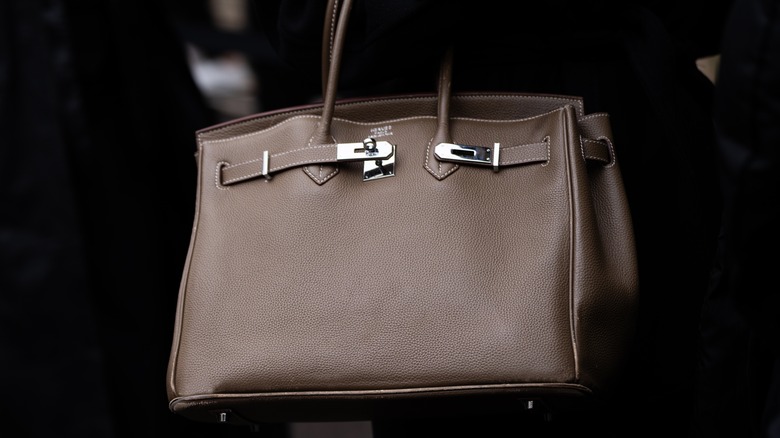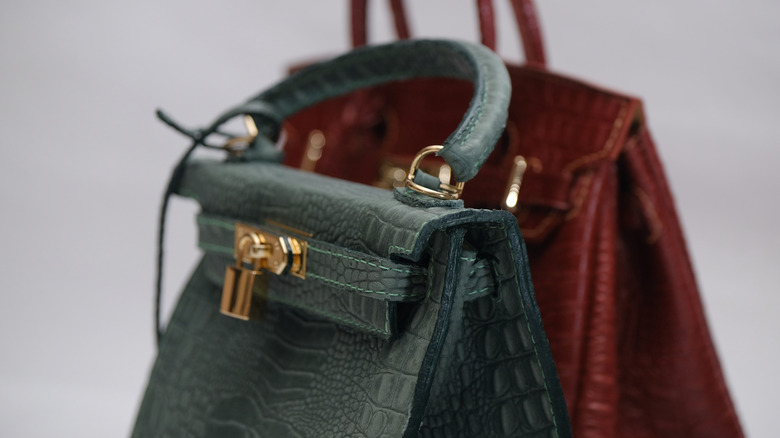The Beloved Bag That Holds Its Value Better Than Gold Itself
Depreciation, loss in value, and general return on investment (ROI) concerns seem to be a regular part of large purchases. From just how quickly your car depreciates after driving it off the dealer lot to the latest electronics to trying to resell vacation timeshares, it seems that many of consumers' larger purchases simply don't retain their value long term. This can not only lead to financial losses on the resale and secondary markets but can also lead to plain frustration. Even our money loses purchasing power over time, especially in the wake of higher inflation rates (which is why it's worth considering a high-yield savings account to offset inflation's harmful effects on your money). This might lead you to wonder what kinds of items do, in fact, retain their value. Or, even more so, what items might grow in worth over time.
While property can be an obvious answer, home values can ultimately fluctuate in certain markets. Plus, the increase in natural disasters across the country means that some of the requirements of homeownership (such as homeowners insurance) get more expensive every year. Another good guess would be investing in gold. However, you might be surprised to learn that there was actually one specific item that beat out even gold in terms of holding its value, the Birkin bag. As James Firestein, founder of luxury resale and authentication platform OpenLuxury, told Fortune, "The resale value of particularly the Birkin and Kelly bags over the past 10 years has outpaced gold."
Birkin pricing
While thinking of a Birkin bag as an investment as opposed to a fashion accessory might seem like a cheeky way to justify the purchase, there is more to this concept that first meets the eye. Immortalized in TV shows and movies, the Hermès Birkin bag holds a unique status in not just the fashion world but the larger pop culture zeitgeist. Famous for its exclusivity, best epitomized through the bag's historically long wait lists and exorbitant prices (as of 2025, the smallest Birkin bag retails for over $12,000, according to Sotheby's). With that in mind It's important to realize the wide variety of just how much a Birkin can cost before assessing if it's an investment that might be right for you.
The most expensive Birkin bag ever created contained rose gold inlaid with a whopping 2,712 diamonds. This bag, known as Sac Bijou Birkin, sold for around $2 million. However, it's worth noting that only three of these particularly special bags were made in 2012. When looking at the commonly available Birkin bags, the Birkin 25 and Birkin 30 are the most popular models. The smaller Birkin 25 is set to retail for $12,100 in 2025 while the Birkin 30 will be priced at $13,300. Keep in mind that these prices can vary depending on the specific leather used, trims, and other special features. It's also important to keep in mind that Hermès generally raises the price of the bag every year, which historically means a 4-6% bump in annual price.
Retaining value
While the initial financial outlay for a Birkin is steep, the eventual reward could make it worth it. Perhaps one of the most intriguing things about Birkins is not just how well they hold their value, but how much ROI an owner can expect. In the most general sense a regular leather Birkin bag can resell for anywhere between $20,000 and $35,000 (with $40,000 for exotic, and over $100,000 for the Himalaya Birkin). This is partly because the secondary market premium for Birkin bags is the highest of any existing luxury brand. Also, while Hermès does raise the price of the bags every year, its compound annual growth rate is only 5% (since the bag's introduction in 1984).
According to a 2016 study from Baghunted, the value of Birkin bags grew faster than both the S&P 500 and the price of gold since 1980. In fact, Birkins experienced an average annual value increase of 14.2%, meaning owners experienced an over 500% return on investment over 35 years. However, according to CNN, both Credit Suisse and Deloitte compared Birkin bags more to hedge-fund investments than other luxury collectibles due to the market volatility that generally surrounds them. With that in mind, there is still quite a gamble in purchasing a Birkin as an investment. This is particularly true when you consider how complicated it can be to maintain the value of your bag. From whether or not to keep the original packaging to how to care for the handles, wear and tear factors can damage potential ROI.


